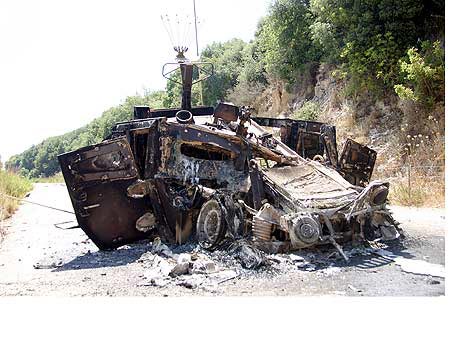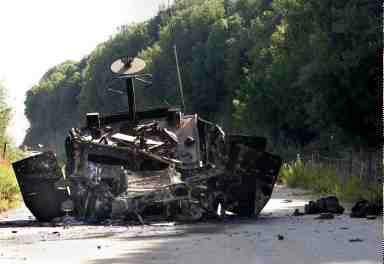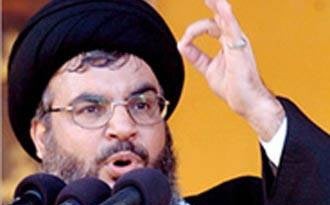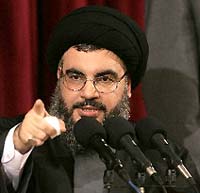South Lebanon, Khallat Wardah, the fifth anniversary of the “Operation True Promise.”
South Lebanon, Khallat Wardah, the fifth anniversary of the “Operation True Promise” …

 On July 12th 2006, the Lebanese Islamic Resistance (armed wing of Hezbollah) carried out a bold quality ambush operation inside the occupied Lebanese land at the border with Palestine in Khallat Wardah area near Ayta Al Shaab town. Of the Zionist soldiers targeted in the ambush the resistance was able to capture two and kill a number of others.
On July 12th 2006, the Lebanese Islamic Resistance (armed wing of Hezbollah) carried out a bold quality ambush operation inside the occupied Lebanese land at the border with Palestine in Khallat Wardah area near Ayta Al Shaab town. Of the Zionist soldiers targeted in the ambush the resistance was able to capture two and kill a number of others.
The Goal was to capture the IOF soldiers inside the armored humvee. Hezbollah fighters launched RBJ projectiles on a Zionist hummer. Two of the four soldiers fled into a near woodland, while Mujahedeen captured the two other soldiers, later identified as Ehud Goldwasser and Eldad Regev.
An Israeli Merkava Mark II tank, that was stationed nearby, attempted to pursue the fighters into Lebanon, but was hit by an improvised explosive device (IED), killing all four crew members. The clashes resulted in eight enemy soldiers killed.
A “cleaning group” of Hezbollah took the charge of burning the Humvee to erase any trace that may refer to the two soldiers or help the enemy to reveal their direction.
|
Sayyed Nasrallah speaks at a press conference in Beirut; July 12, 2006. |
At the same time, resistance fighters were ready to deal with any possible Israeli response.
Soldiers were taken out of the area, where cars were replaced before being moved on a long journey…
On the same day, Hezbollah released a statement saying "Implementing our promise to free Arab prisoners in Israeli jails, our strugglers have captured two Israeli soldiers in southern Lebanon.”
Later on, Sayyed Hassan Nasrallah held a press conference, in which he declared that "No military operation will return them (the captured soldiers) … the prisoners will not be returned except through one way: indirect negotiations and a trade of prisoners."
| Hezbollah destroys the Zionist Saer-5 off the Tyre shore. |
After Hezbollah's operation, the Zionist military launched air, naval, and ground attacks at targets across Lebanon, along with a naval blockade against the country, followed by a ground invasion. Hezbollah responded by launching hundreds of rockets into northern occupied territories, many reaching as far south as the port city of Haifa.
On Hezbollah's side, the war showed that its fighters possessed the training and fighting ability of a well-trained army division. Technologically, they surprised Israel with the depth and range of its missiles. One missile crippled a Zionist naval ship and sank a commercial freighter off the Lebanese coast in the early days of the war. The missiles landed as far south as Haifa. For the first time since before the 1967 war, major Zionist population centers came under attack.
| Sayyed Nasrallah and the five liberated prisoners: Samir Kuntar, Khodor Zidan, Maher Korani, Mohammad Sorour and Houssein Soleiman on July 16, 2008 |
This war was a part of the wider Israel-Lebanon Conflict which dates from the first Israeli invasion of Lebanon in 1978.
On Wednesday July 16 2008, Israeli entity and Hezbollah ended an indirect negotiation, whereby Hezbollah turned over the bodies of the two captured Israeli soldiers, in exchange for Lebanese detainees: Samir Kuntar, four Hezbollah mujahedeen captured during the war, and the bodies of approximately 200 other Lebanese and Palestinian fighters held by Israel. Kuntar and the other released fighters were greeted by a hero's welcome in Beirut.
This day undoubtedly reaffirmed the Divine Victory of the Undefeatable Resistance in the July war 2006.


